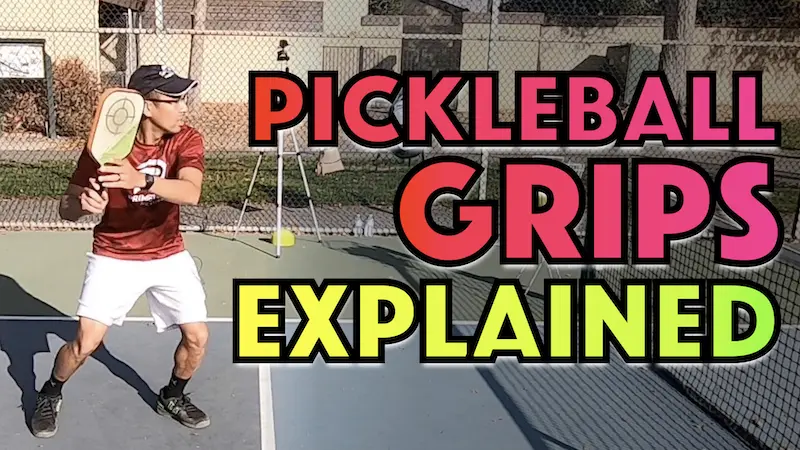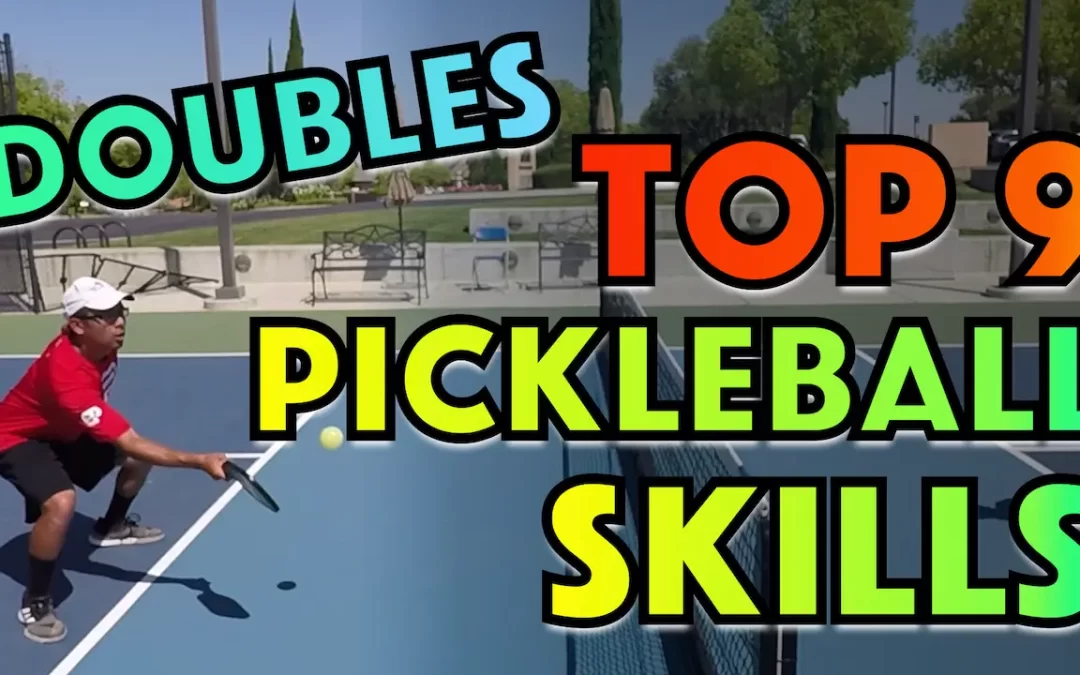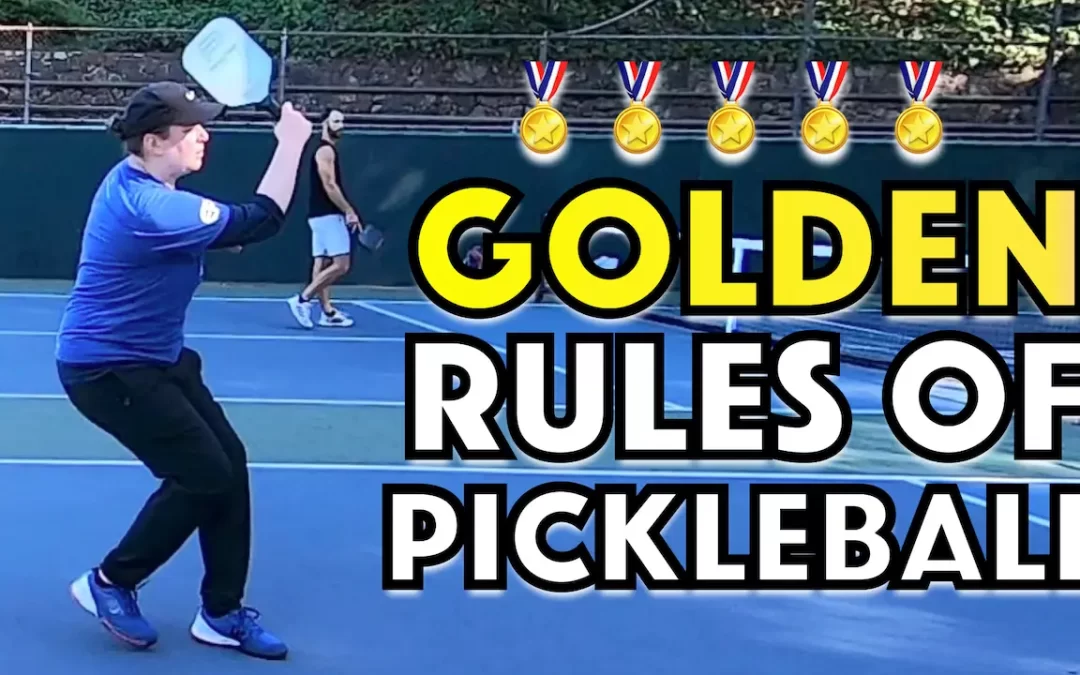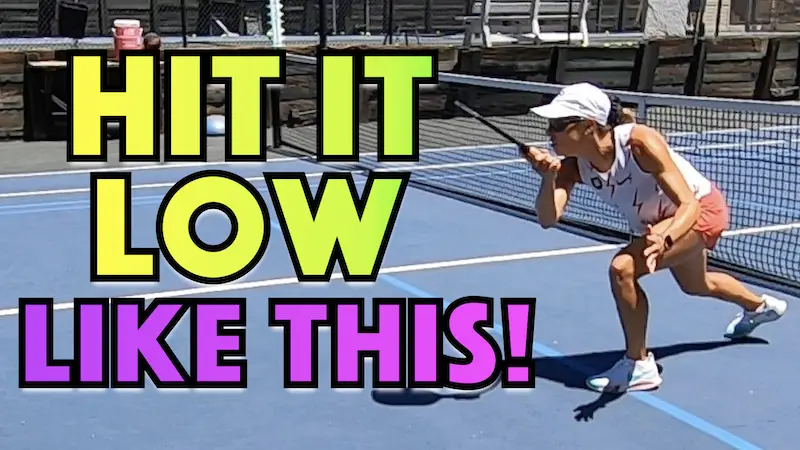In this blog we’re going to go over the top ten basic technique mistakes that we see many players making.
Identifying if these mistakes are present in your game and resolving them quickly is critical to your ability to play consistently well and set a good foundation for further development in your game.
If these mistakes don’t get cleaned up then it will prevent you from progressing to more advanced techniques and ultimately become the player that you desire to be.
Mistake #1 – Paddle Tip Pointed Directly Down When Dinking
We’re gonna start off with technical mistake number one and that is dinking with your paddle head directly down. What I mean by that is having a straight wrist.
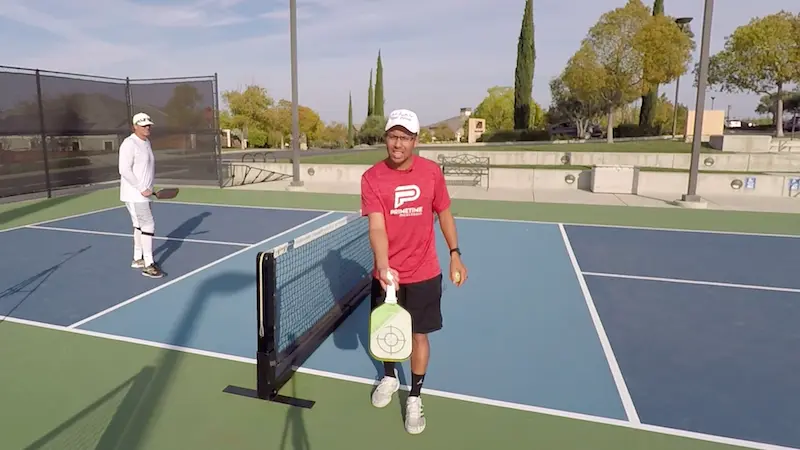
If you are new to pickleball and you have been taught this way, I would not recommend it. There’s a lot of problems with this.
Instead of that you want to be in a laid back wrist position.
See image below of what a forehand and backhand would look like.
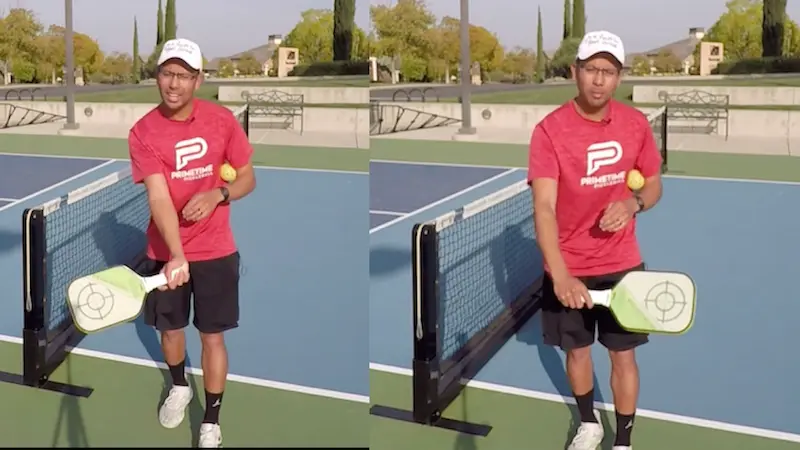
If you are using the straight wrist method, you might have some control in the beginning but what you’re going to notice is as you get better, if you want to put different spins on it like underspin and topspin, it’s going to be very difficult.
Also with the straight wrist, the paddle face is really exposed and angled up. You can get a lot of popups that way.
Mistake #2 – Too Much Wrist Action Throughout Shot (Flicking)
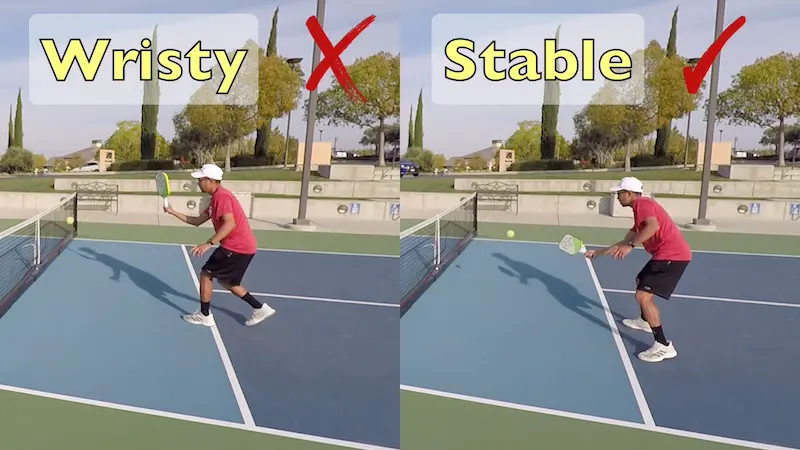
The second mistake that we see a lot of players making is that they are flicking their wrists and moving their paddle face a lot before, during and after contact.
When you hit the ball in the game of pickleball you want to have a stable paddle face so that you can have the most control. You don’t want to use a lot of wrist.
You want the paddle face/angle to be stable so that you have the most control and you’re accurately hitting your shot.
Mistake #3 – Hitting A Volley Coming To Your Backhand Side With A Forehand
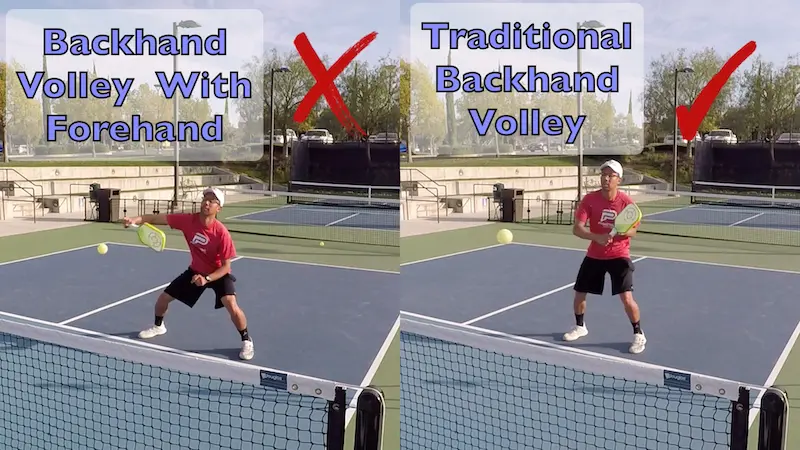
The third technical mistake is hitting a backhand volley with your forehand. We see a lot of players, especially beginner players, doing this.
Instead of hitting it as a normal volley you do a windshield wiper motion from your right side to your left and hitting what should be a backhand shot with a forehand.
This type of motion gets your paddle out of position which means it will be hard to defend the next shot. It’s a big under development of your backhand.
You’ll find that it’s going to be impossible to hit a ball that comes in the blue area in the image below with your forehand.
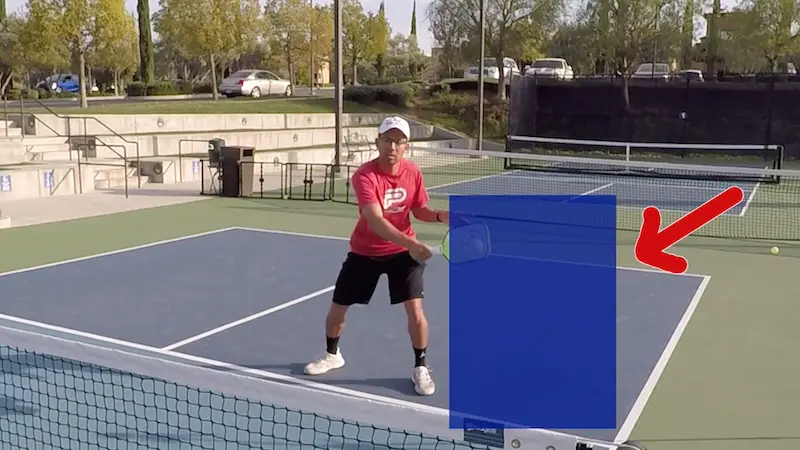
If you find yourself doing this windshield wiper motion to your backhand, we really urge you to develop a textbook backhand instead.
Mistake #4 – Too Much Extra Motion (Not Needed) In Your Stroke
Mistake number four is having too much movement in your stroke. We’re specifically talking about your backswing and then your follow-through.
In the game of pickleball you’re really close up to your opponents and the ball could come to you really fast so you want to make sure that you are keeping your strokes compact and pretty short so that you’re ready for the next ball.
You don’t want to take your paddle way back and and take huge swings. Keep in mind we’re not talking about swinging volleys, we’re referring to regular balls (volleys, third shots and even dinks).
You want to make sure that you have a very short backswing and short follow-through so that you don’t have any extra movement that you don’t need.
Mistake #5 – Inconsistent Contact Point Relative To Your Body
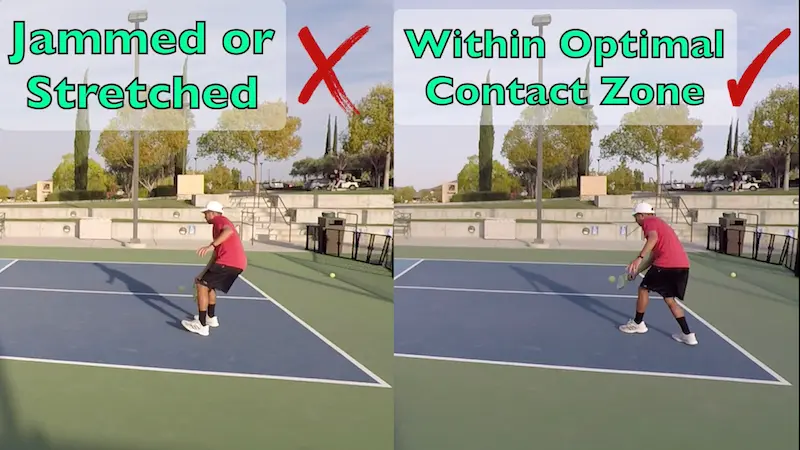
The fifth mistake is having an inconsistent contact point. What we mean by the contact point is when your paddle is actually hitting the ball.
Your contact point can be very inconsistent at times relative to your body. For example, it can be way out in front or it can be really close to your body.
You’re going to have the most control when you are hitting the ball right in front of you and not stretched out and not jammed up.
Right in front of you (not too far out and not too close) is the optimal contact zone. It’s a comfortable range where you’re not stretching and reaching but you’re also not super close to your body.
You want to make sure that you are contacting that ball almost in the same spot, in that same zone, every single time.
In order to do do this you have to move your feet. If that ball is coming a little bit deeper then make sure you back up and that you’re hitting that ball in that optimal contact zone.
If that ball is short you want to make sure that you come up to that ball and that you’re hitting it very comfortably right in front of you.
Mistake #6 – Late Contact Point On The Forehand
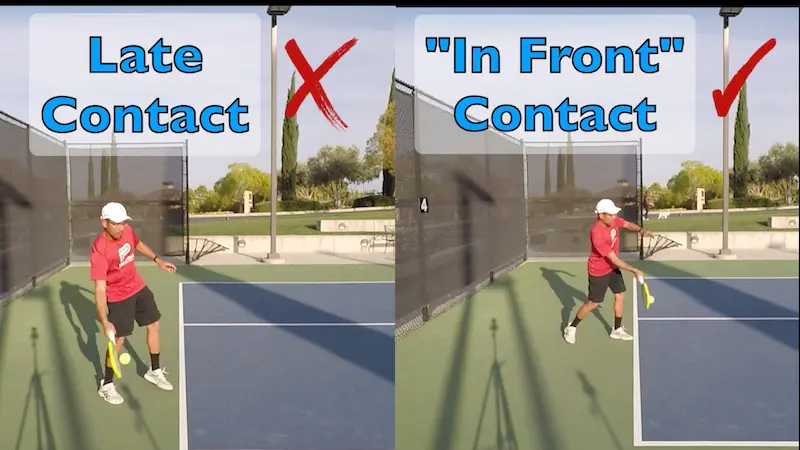
The sixth mistake that we see a lot of players making specifically on the forehand side is having a late contact.
This can happened on a third shot but especially groundstrokes or returns. Perhaps a ground stroke drive return or a slice return.
We see a lot of players making contact a little bit behind themselves or even right to the side of their body. When you hit the ball like this you have a straight wrist and it angles your paddle face in such a way that doesn’t allow for the best shot.
You really want to get this contact moved up in front of you as well as lay your wrist back.
This is going to give you the most power and the most control.
Mistake #7 – No Shoulder Turn On Groundstrokes
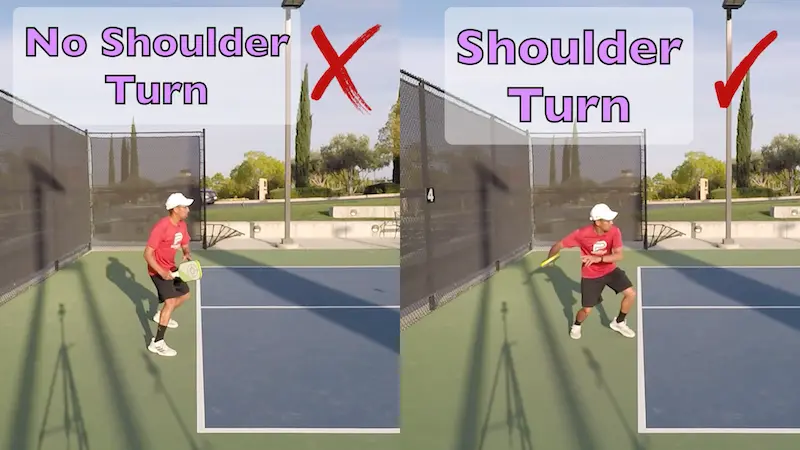
Mistake number seven that we see a lot of players make is that they have almost no or non-existent shoulder turn. They’re just using their wrists and their arm to hit a ground stroke return on their forehand and backhand side.
By doing this you’re losing power and you’re not going to maximize that power and control that you would have if you turn your shoulders.
As you turn your feet, get into a close stance position, engage your other muscles and get low. As you hit your shot your shoulder will then turn back and your chest will open up to face the net. This will allow for power in to your shot.
Mistake #8 – Very Tight Grip As Well As Tension In Shoulder And Arm
Mistake number eight is a big technique mistake that we see lots of players do, mainly with groundstrokes and returns, which is having very tight tension in their arm. It’s almost like a death grip.
You can see they’re flexing their arm when they’re hitting the forehand or return and you can kind of tell because their back swing to their follow-through is very jerky. It’s obvious it’s not relaxed at all.
To get that power and to use that kinetic chain where the muscles all work together, you really want to have a very loose stroke.
When you watch the best players hit their ground strokes they look like they’re hitting the ball so hard. In reality they’re either using their legs as well as momentum.
Their stroke is very loose and you can tell that they’re not very tense and hitting the ball with all the muscles in their arm and their wrist super clenched.
Mistake #9 – No Use Of Legs And No Weight Transfer Into Shot
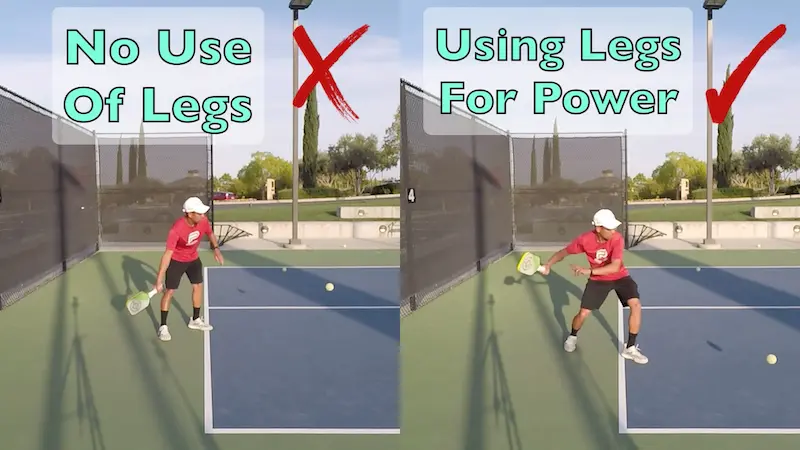
Number nine also has to do with mainly groundstrokes and returning the ball and that is the weight transfer.
A lot of people see the return coming and they just plant their feet with their legs straight. They don’t bend their legs and they just swat at the ball.
You really want to bend your knees and plant your weight on that back foot. Move through the ball as you hit it and transfer your weight from the back to the front.
With this your momentum is already going forward so it’s a lot easier to get up to the non-volley zone.
Same thing goes on the backhand as it does on the forehand.
Mistake #10 – No Split Step In General And Particularly None During Transition To NVZ
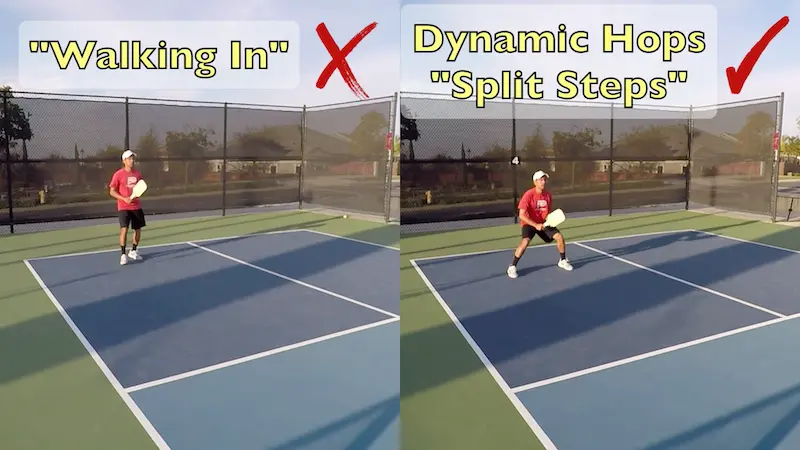
The tenth and last, but not least, mistake that we see lots of players make is that they do not split step when they are making their transition from the baseline to the non-volley zone.
You’ll see a lot of players just kind of walk up and their knees aren’t bent and they’re not making any split step or dynamic hop so that they can be ready for any ball that comes their way.
They’re kind of just walking in.
All a split step is, to put it simply, is a dynamic kind of hop. It doesn’t have to be a huge jump.
After you hit that ball you should be getting into position starting with the split step. Your weight should be on the balls of your feet. This way you can be ready to move to the left or to the right or up or back.
If you walk up instead of split jump you’re weight will be on your heels and it will be hard for you to take off after a ball if you need to run for it.
You’re going to hit, move up as far as you can then initiate this split step so you can be ready for the next shot and then proceed this way moving all the way up to the NVZ.
If you hit a bad shot, you don’t have to keep trying to proceed up. Just stay in your current position and play defence until you get a neutral ball and then start moving up again with the split step idea in mind.


